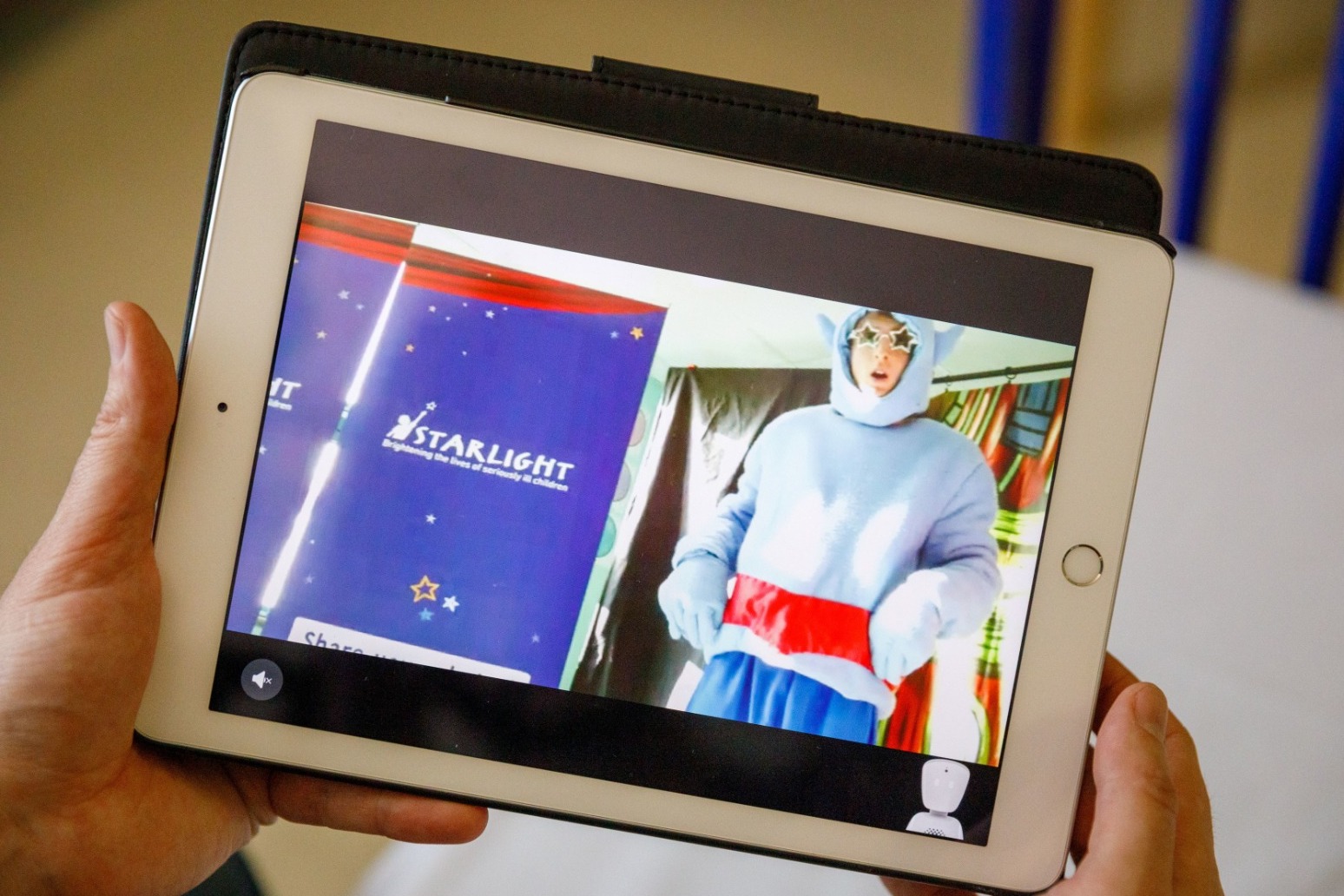
Robots to help poorly children stay in touch
A charity for young hospital patients is using robots to help children keep in touch with their friends even if they are being treated in isolation. The 30cm tall AV1 units allow children to communicate remotely, whether it is with their family at home, friends and school or other people on their wards.
The Starlight Children's Foundation, a national charity that aims to preserve childhood throughout serious illness, said it was important for patients' mental health to keep in contact with others when they were seriously ill on isolation units.
It said the technology works by putting a portable robot where the child would usually be, whether that be at home, at school or with friends.
The child can then control the robot via a tablet to interact with the environment by listening, talking, moving it up and down and showing expressions.
Unlike conventional, two-way communication apps, the AV1 does not have a screen showing the child, avoiding the risk of the patient feeling self-conscious about their treatment.
The robot's camera is controlled by the child remotely and the user can control the unit's four programmed facial expressions - happy, sad, confused or neutral.
Starlight tested the robots during performances of their touring pantomime for children in hospital, so those who could not attend a show did not miss out.
The charity said a young girl was unable to leave her room and was stressed due to ongoing investigations, but she was distracted by being able to see the pantomime which made her laugh and allowed her to be a child again.
The charity is now piloting their use at St Oswald's Hospice in Newcastle, the Royal Surrey Hospital and the Queen Elizabeth Hospital in Lewisham, London.
Dr Sandra Gulyurtlu, head of insights and impact at Starlight, said: "We are really excited to be testing technology to help support our cause.
"Following the initial test during the pantomime tour we observed improvements in children's mood, engagement and wellbeing after using AV1.
"Now the AV1 robot has been placed in a hospital setting we are excited to see the results of long-term use."
Lauren Archibald, activities co-ordinator at St Oswald's Hospice said they strived to provide a home-from-home environment for children with life-limiting and life-shortening conditions and the robots can help make sure they do not miss out on family time.
She said: "For us it is about the child having a good time, they shouldn't have to sacrifice their childhood just to be able to receive the care they need.
"The Starlight robot will help achieve that, as it can represent the child's presence at school or home so they can experience it as if they were there, while receiving the best care here."
Published: by Radio NewsHub